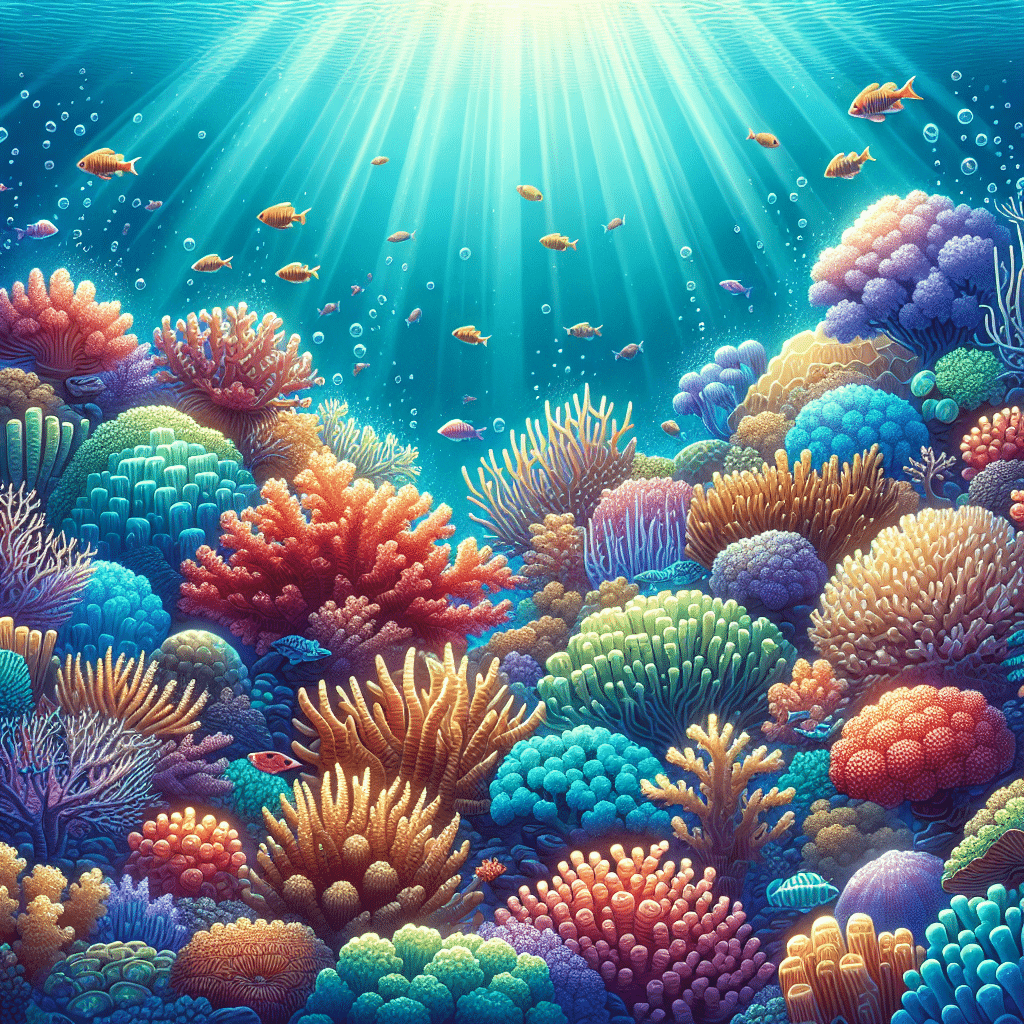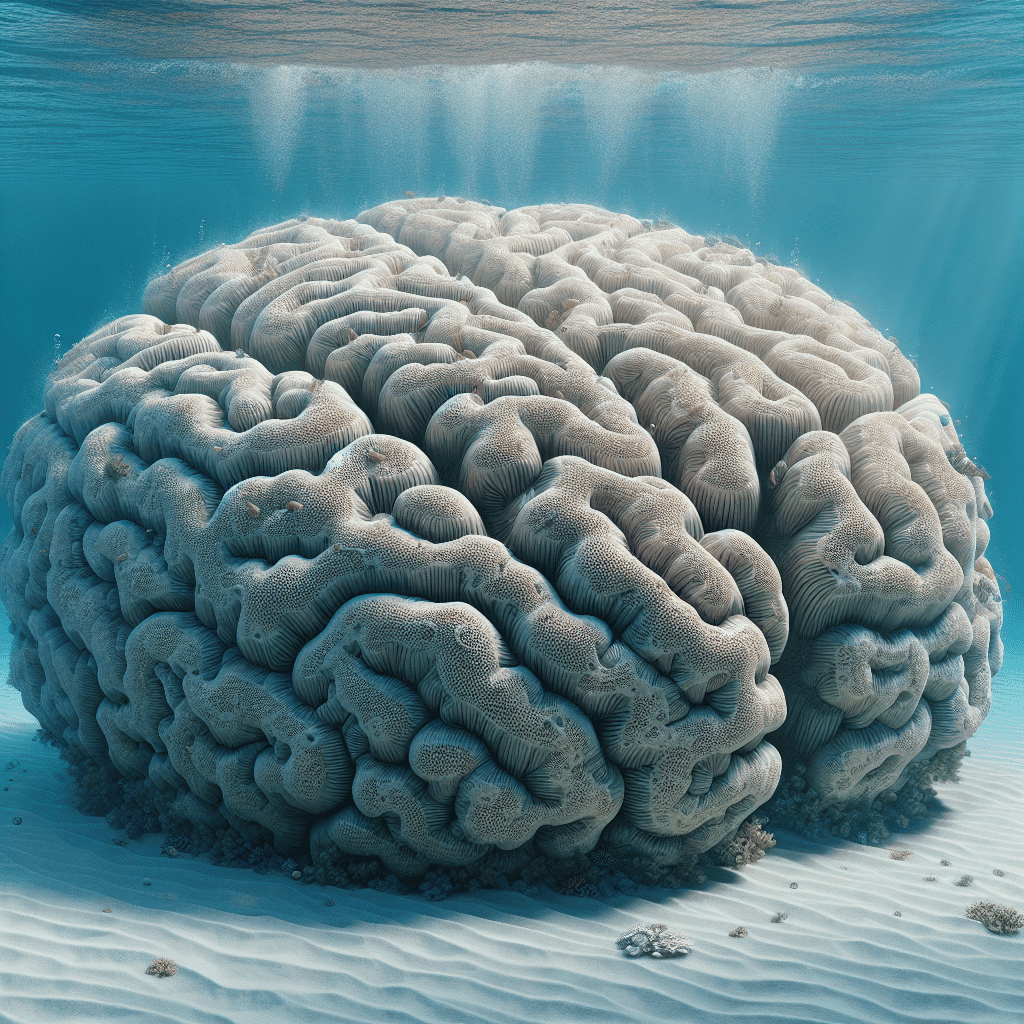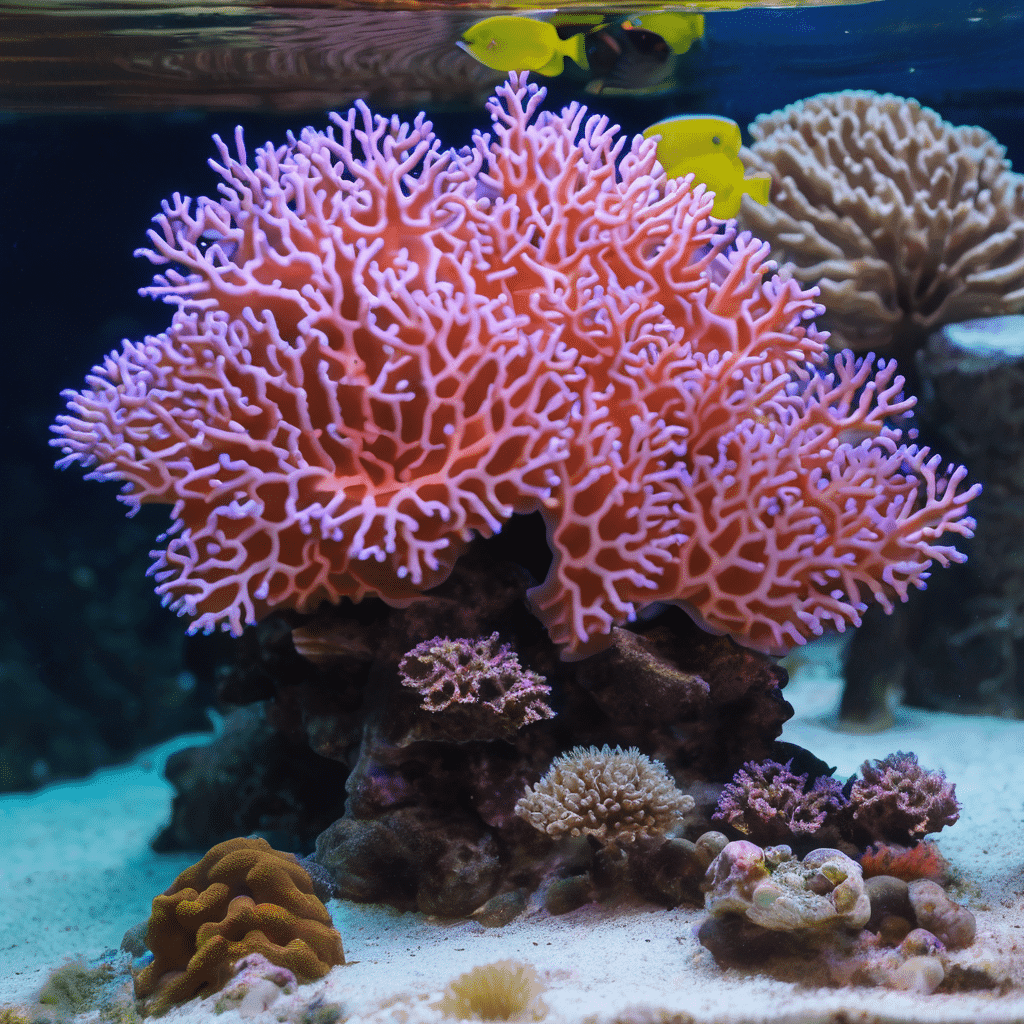Coral Reef Ecosystems
Coral Reefs Around the World
Coral reefs are some of the most fascinating ecosystems on the planet, primarily found in tropical regions close to the equator. They thrive in warm, shallow waters and can be seen in more than 100 countries. Interestingly, over half of the world’s coral reefs are located in just six countries: Australia, Indonesia, the Philippines, Papua New Guinea, Fiji, and the Maldives (Coral Reef Alliance).
Here’s a quick overview of some key coral reef locations:
| Country | Key Coral Reefs |
|---|---|
| Australia | Great Barrier Reef |
| Indonesia | Raja Ampat Islands |
| Philippines | Tubbataha Reefs |
| Papua New Guinea | Kimbe Bay |
| Fiji | Great Astrolabe Reef |
| Maldives | Baa Atoll Biosphere Reserve |
These reefs cover only 1% of the world’s oceans but provide essential habitats for at least 25% of marine life, making them incredibly important for biodiversity (NOAA).
Biodiversity in Coral Reefs
Coral reefs are believed to have the highest biodiversity of any ecosystem on Earth, even surpassing tropical rainforests. They occupy less than one percent of the ocean floor yet are home to more than 25% of all marine life (Coral Reef Alliance). This incredible variety includes over 4,000 species of fish, corals, and other marine organisms.
The biodiversity of coral reefs plays a crucial role in their health and resilience. A diverse ecosystem is often better equipped to withstand disturbances such as climate change and pollution. Here’s a quick look at some of the key roles different species play in maintaining the balance of coral reef ecosystems:
| Species Type | Role in the Ecosystem |
|---|---|
| Herbivores | Control algae growth to prevent coral smothering |
| Predatory Fish | Keep fish populations in balance |
| Cleaner Fish | Remove parasites from other fish |
This intricate web of life not only supports the reef itself but also provides food and resources for many coastal and inland communities. Having a variety of species ensures the health and stability of coral reefs, making them a vital part of our oceans. If you’re interested in setting up a reef tank, understanding these dynamics can help you choose the right corals, such as acropora, duncan coral, or bubble coral, for your setup.
Coral Reproduction
Corals have some fascinating methods of reproduction, both asexual and sexual. Understanding these processes can help me care for my reef tank better and appreciate the resilience of these incredible organisms.
Coral Frags
Asexual reproduction in corals occurs mainly through budding or fragmentation, also known as coral frags. In budding or fragging, new polyps emerge from parent polyps, creating genetically identical offspring. Fragmentation happens when entire colonies break off and form new colonies. This means that if my coral has a little accident and breaks, it can still survive and thrive by creating new polyps from the frags!
Here’s a quick look at how asexual reproduction works:
| Method | Description | Result |
|---|---|---|
| Budding | New polyps bud off from parent polyps | Genetically identical polyps |
| Fragmentation (Frags) | Entire colonies branch off to form new colonies | New genetically identical colonies |
This ability to clone themselves is crucial, especially during tough times, as it ensures the survival of the species.
Sexual Reproduction
When it comes to sexual reproduction, corals have a more complex process. Most corals engage in mass spawning events, where they release their sperm and eggs into the water. This usually happens on specific nights throughout the year, influenced by environmental cues like temperature and lunar cycles. It’s a synchronized dance that ensures successful fertilization while minimizing hybridization, as corals are mostly sedentary.
Some coral species, such as Brain and Star coral, produce both sperm and eggs at the same time, while others, like Elkhorn and Boulder corals, have colonies where all polyps either produce sperm or eggs exclusively.
Here’s a simple breakdown of sexual reproduction:
| Method | Description | Result |
|---|---|---|
| Spawning | Release of sperm and eggs into the water | Fertilization occurs, forming coral larvae |
| Brooding | Internal fertilization and release of developed larvae | More developed larvae are released |
This method allows for genetic diversity, which is essential for the resilience of coral populations in changing environments.
Understanding these reproductive strategies is key for us reef tank hobbyists. It helps in ensuring that the coral communities in our tanks can thrive and contribute to the overall health of our underwater ecosystems. For more information on different coral types, check out my articles on brain coral, mushroom coral, and acropora.
Threats to Coral Reefs
Coral reefs are some of the most beautiful and diverse ecosystems on our planet, but they face significant threats that can affect their health and survival. As a fish tank and reef tank hobbyist, understanding these threats can help me better care for my corals and advocate for their protection.
Ocean Warming and Coral Bleaching
Ocean warming is a major concern for coral reefs. Increased ocean temperatures, often driven by warmer atmospheric conditions, stress corals and lead to a phenomenon known as coral bleaching. When sea temperatures rise, corals expel the symbiotic algae living in their tissues, which provide them with essential nutrients and color. Without these algae, the corals turn white and become more susceptible to disease and death. The EPA notes that ocean surface water temperatures have increased by an average of 0.5°C since 1860. The Intergovernmental Panel on Climate Change (IPCC) predicts an additional increase of 1.5°C by 2030 to 2050, which could lead to more frequent and severe coral bleaching events.
| Year | Average Temperature Increase (°C) |
|---|---|
| 1860 | 0.0 |
| Present | 0.5 |
| 2030-2050 (Predicted) | +1.5 |
Ocean Acidification and Coral Growth
Another significant threat is ocean acidification, which has increased ocean acidity levels by about 30% since the Industrial Revolution. This phenomenon occurs as the ocean absorbs carbon dioxide from the atmosphere, reducing its pH and impacting carbonate organisms like corals. Acidification slows coral growth and weakens their ability to build calcium carbonate structures, making them more vulnerable to erosion. The EPA predicts that acidity levels may rise by an additional 40% by the end of this century if current trends continue.
| Year | Ocean Acidity Increase (%) |
|---|---|
| Pre-Industrial | 0.0 |
| Present | +30 |
| End of Century (Predicted) | +40 |
As I strive to maintain a healthy reef tank, being aware of these threats—ocean warming and acidification—can inform my choices in coral selection and care practices. It’s essential to support sustainable practices and conservation efforts to protect these vital ecosystems. For more information about specific coral types, check out my articles on brain coral and torch coral.
Coral Diseases
Coral reefs are stunning ecosystems, but they face numerous threats, one of the most concerning being coral diseases. Understanding these diseases is crucial for anyone involved in maintaining a healthy reef tank.
Stony Coral Tissue Loss Disease
Stony Coral Tissue Loss Disease (SCTLD) is a significant issue I’ve encountered in the reef tank community. First identified in the Florida Keys in 2014, this disease has rapidly spread throughout the Caribbean and is considered one of the most lethal coral diseases ever recorded (EPA). SCTLD leads to the rapid degradation of coral tissue, which can result in extensive loss of coral cover if not addressed promptly.
The disease manifests as white lesions on the coral, which can expand quickly, killing the coral polyps underneath. It’s crucial to monitor your corals regularly for any signs of SCTLD. Keeping water quality high and reducing stressors can help mitigate the effects of this disease.
Impact of Diseases on Coral Reefs
The impact of diseases like SCTLD on coral reefs is profound. Not only do they affect individual corals, but they can also disrupt the entire reef ecosystem. Healthy coral reefs support diverse marine life, providing habitat and food for various species. When coral health declines due to disease, the biodiversity of the reef can suffer as well.
Here’s a quick overview of the impacts that coral diseases can have on the reef ecosystem:
| Impact Area | Description |
|---|---|
| Biodiversity Loss | Diseases reduce coral cover, leading to fewer habitats for marine species. |
| Ecosystem Balance | Healthy reefs support complex food webs; diseases disrupt these interactions. |
| Economic Effects | Coral reefs contribute to tourism and fisheries; their decline can impact local economies. |
Additionally, pollution from land-based activities can exacerbate the situation. Nutrient enrichment from runoff promotes algae growth, which can smother corals and prevent them from recovering.
As reef tank hobbyists, we must stay vigilant about the health of our corals. This includes maintaining optimal water conditions, being mindful of overfishing practices, and understanding how different corals, like brain coral or torch coral, may react to stress. Keeping an eye on these factors can help ensure a thriving reef tank environment.
Importance of Coral Reefs
Coral reefs are not just beautiful underwater structures; they play vital roles in our economy and health. As a fish tank and reef tank hobbyist, I find it fascinating how much these ecosystems contribute to our lives.
Economic Significance
The economic value of coral reefs is immense. In the U.S. alone, the commercial value of fisheries that depend on coral reefs is estimated to be over $100 million. More than half of all U.S. fisheries species rely on these reefs at some point in their life cycles, making them essential to both commercial and recreational fishing (NOAA).
Coral reefs also support local economies through tourism and recreation. They attract millions of visitors each year, who engage in activities like diving, snorkeling, and recreational fishing. The revenue generated from these activities contributes billions of dollars to local businesses, including hotels, restaurants, and tour companies.
| Economic Contribution | Amount |
|---|---|
| Commercial fisheries value | $100 million+ |
| Tourism revenue | Billions annually |
Medicinal Potential
Corals are not just vital for our economy; they also hold great promise for medicine. Many drugs are being developed from compounds found in coral reef animals and plants. These compounds are being investigated for possible treatments for serious conditions such as cancer, arthritis, bacterial infections, and viruses (NOAA).
The ongoing research into the medicinal potential of corals shows that these ecosystems may provide untapped resources for new, life-saving treatments. As I care for my own reef tank, I can’t help but appreciate the delicate balance and potential these corals represent.
Coral reefs are crucial not only for the environment but also for our economy and health. By understanding their significance, we can better appreciate the need for their conservation and protection. For more information about different types of corals that thrive in reef tanks, check out our articles on brain coral, torch coral, and acropora.
Coral Classification
Understanding coral classification is essential for anyone diving into the world of reef tanks. It helps me identify the types of corals I might want to include in my setup and how to care for them properly.
Types of Corals
Corals can be broadly classified into two main categories: hard corals and soft corals. Here’s a quick overview of the types:
| Type of Coral | Description | Examples |
|---|---|---|
| Hard Corals (Scleractinia) | These corals build calcium carbonate skeletons and form the structure of reefs. | Acropora, Staghorn Coral, Brain Coral |
| Soft Corals | These corals do not produce a hard skeleton and are more flexible. | Xenia, Leather Coral, Kenya Tree Coral |
Hard corals, like torch coral and bubble coral, are crucial for reef building and play a significant role in the ecosystem. Soft corals, such as ricordea and zoanthids, add diversity and movement to a reef tank.
Evolution of Coral Reefs
Coral reefs have a fascinating evolutionary history. The earliest reefs were built by colonies of calcareous algae, developing around two billion years ago during the Precambrian era, before corals even existed (SeaWorld).
Hard corals emerged as the primary reef builders during the Mesozoic era, approximately 65 to 245 million years ago. This was a time when coral reefs flourished until many families disappeared at the end of the era. The species forming reefs during the Tertiary period (2 to 65 million years ago) were quite similar to those we see today (SeaWorld).
The Tabulata, an order of corals, appeared in the fossil record around 480 million years ago with a unique structure. They were colonial and characterized by slender tube-like corallites. In contrast, the Scleractinia order became prominent around 220 million years ago and has been responsible for constructing most of today’s coral reefs (Corals of the World).
As I explore my options for my reef tank, understanding these classifications and the evolutionary history of corals helps me appreciate their role in the marine ecosystem and choose the right corals for my setup.
Conservation Efforts
Taking care of our coral reefs is essential, especially for those of us who enjoy maintaining a reef tank. There are practical steps we can take to ensure the health and longevity of corals in both natural ecosystems and our aquariums.
Protecting Coral Spawning
Coral spawning is a critical part of their life cycle. When coral larvae are released into the water, they swim to the surface, settle on the ocean floor, and attach to hard surfaces to grow into coral polyps. To support this process, I focus on improving ocean conditions, which can help protect spawning corals and their new offspring.
Some steps include:
- Reducing human impacts on marine environments
- Lowering our carbon footprints
- Expanding marine protected areas
- Supporting local communities in conservation efforts
By ensuring these practices are in place, we can help coral populations thrive and recover from adverse conditions. Healthy corals are more likely to reproduce successfully (Coral.org).
Sustainable Practices
Incorporating sustainable practices in our reef tank setups is another way to contribute to coral conservation. This includes:
- Using ethically sourced corals and live rock
- Implementing water quality management to mimic natural conditions
- Regularly monitoring and controlling water parameters, such as pH, salinity, and temperature
Healthy ecosystems in our aquariums can reflect the natural habitats of corals. It’s also important to recognize that various marine creatures, like sea anemones and giant clams, play vital roles in maintaining reef health by forming symbiotic relationships and recycling nutrients (Coral Reef Alliance).
By adopting these practices, both in our tanks and in the broader marine environment, we can make a difference in preserving the beauty and biodiversity of coral reefs. For more information on specific types of corals, check out my articles on torch coral, brain coral, and acropora.
Role of Corals in Marine Life
Corals are not just beautiful; they play a vital role in the marine ecosystem. Understanding their biodiversity and ecological functions can help us appreciate why they are so important for the health of our oceans.
Coral Reef Biodiversity
Coral reefs are believed to have the highest biodiversity of any ecosystem on the planet, even surpassing tropical rainforests. They occupy less than one percent of the ocean floor but are home to over 25% of all marine life (Coral Reef Alliance). This rich biodiversity contributes to the resilience of the ecosystem, allowing it to withstand significant disturbances.
Here are some key species found in coral reefs and their roles:
| Species | Role in Ecosystem |
|---|---|
| Herbivores | Eat algae to prevent coral smothering |
| Predatory Fish | Maintain balance in fish populations |
| Cleaner Fish | Remove parasites from other fish |
| Parrotfish | Scrape coral for algae, contributing to sand formation |
Coral reefs host a variety of marine creatures, such as sea anemones, sea stars, giant clams, and nudibranchs, all playing significant roles in maintaining reef health (Coral Reef Alliance).
Ecological Functions
Corals contribute to essential ecological functions in the marine environment. They provide habitat and shelter for countless marine species, helping to sustain the food web. The complex structures formed by coral colonies serve as nursery grounds for fish and other marine organisms.
Corals also play a role in nutrient recycling and water filtration. They host symbiotic relationships with zooxanthellae, microscopic algae that provide energy through photosynthesis. This relationship not only helps corals thrive but also supports other marine life by enhancing the overall productivity of the reef.
Additionally, coral reefs protect coastlines from erosion and storm surges, acting as natural barriers that help maintain the integrity of coastal ecosystems. Their presence contributes to the formation of beautiful sandy beaches, as seen with the contribution of parrotfish, which grind coral and excrete it as sand (Coral Reef Alliance).
Understanding the role of corals in marine life is crucial for anyone interested in reef tank hobbies. The health of coral reefs impacts not just the fish and other creatures that inhabit them, but also the overall health of our oceans. For more insight into specific types of corals to consider for your aquarium, check out our pages on acropora, torch coral, and mushroom coral.



